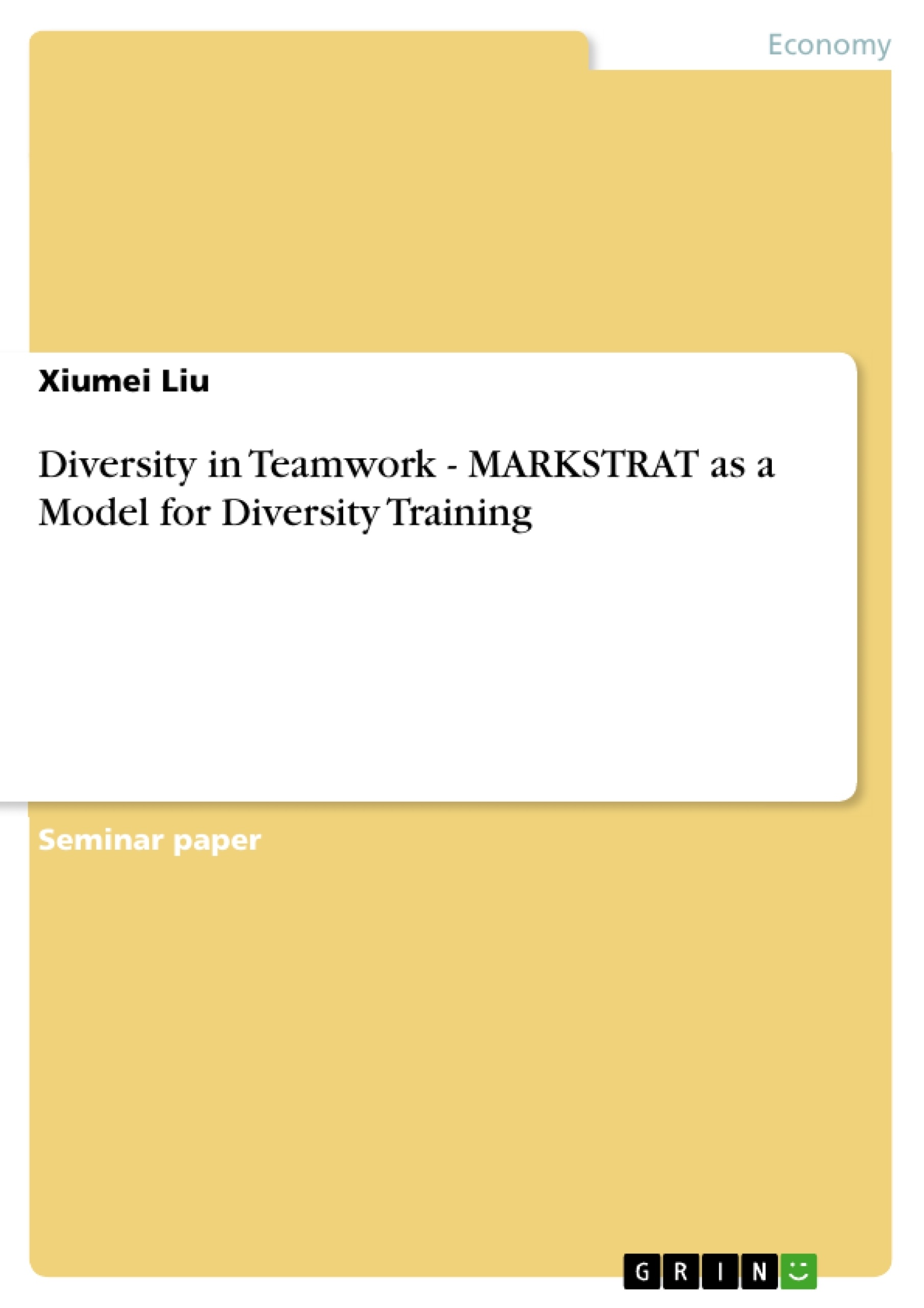Team ability and social competence are crucial in the new economy. In the globalized world, where the workforce is becoming increasingly diverse, working in diverse teams is even more important. What the effects of diversity on teamwork are and how the ability to work in diverse teams can be trained are questions that the author is interested to explore in this research paper.
In doing so, Chapter I takes a theoretical approach by starting to explain diversity in the workforce as a trend as well as the types of diversity. Since diversity has contrasting effects on teamwork, both disadvantages and advantages are analysed in the third section. In order to make use of the positive aspects of working in diverse teams and still avoid or minimize the negative effect of differences at the same time, diversity should be effectively managed, which is discussed in the last section of Chapter I.
Admittedly, diversity training can only be achieved by working in a diverse team. How can the ability to work in diverse teams be trained at universities? Chapter II intends to answer this question by providing the example of MARKSTRAT as a means of creating heterogeneous learning teams. As the paper shows, by bringing together students from eight universities with seven different nationalities, Markstrat Slagelse 2007 created an opportunity for students to not only teach them skills implementing marketing strategies but also enable them to collect the most valuable experience by working in culturally, socially, gender- and age-diverse teams. In order to present the work process in it, one team has been singled out to depict team development and interpersonal interaction among its team members, including how they became acquainted with one another, where disagreements came from, what was done to resolve conflicts in order to improve common understanding and reach mutual decisions. In order to vividly describe the dynamics of cooperation in this group, four phases including forming, storming, norming, and performing have been differentiated.
As a member of this team, the author bases the study of these interactions on direct participation and/ or observations of the work process. By exploring the effects of diversity in teamwork in both theory and practice, the author hopes to shed light on the importance of the constructive use of diversity in teamwork and thereby contribute to creating the awareness of diversity training.
Table of Contents
- Introduction
- Chapter 1 Diversity in Teamwork
- 1.1 Diversity as a Workforce Trend
- 1.2 Types of Diversity
- 1.3 The Impacts of Diversity on Teamwork
- 1.3.1 Disadvantages of Diversity
- 1.3.2 Advantages of Diversity
- 1.4 Managing Diversity
- Chapter 2 MARKSTRAT as a Model for Diversity Training
- 2.1 What is MARKSTRAT
- 2.2 Demographic Diversity in MARKSTRAT SLAGELSE 2007
- 2.3 Teamwork in MARKSTRAT SLAGELSE 2007 - Group OO as an Example
- 2.3.1 The Team Members in the Group OO
- 2.3.2 From Forming to Performing: The Team Development in the Group OO
- Conclusion
Objectives and Key Themes
This paper aims to analyze the impact of diversity on teamwork, specifically focusing on the benefits and challenges associated with creating and managing diverse teams. It seeks to understand how diversity affects team performance and how to effectively leverage the advantages of diversity while mitigating potential negative effects.
- The increasing trend of diversity in the workforce
- The advantages and disadvantages of diversity in teamwork
- Strategies for effectively managing diversity in teams
- The MARKSTRAT program as a model for diversity training
- Team development and conflict resolution in diverse teams
Chapter Summaries
Chapter 1 explores the increasing trend of diversity in the workforce and examines the different types of diversity. It delves into the positive and negative impacts of diversity on teamwork, highlighting the potential benefits of creativity and new ideas, as well as the challenges of miscommunication and conflict. This chapter also addresses the importance of effective diversity management strategies to maximize the benefits of diversity and minimize its drawbacks.
Chapter 2 utilizes the MARKSTRAT program as a real-world example to examine diversity in teamwork. It provides a detailed account of the demographic diversity within MARKSTRAT and offers a case study of one team's experience with diversity, focusing on team development, conflict resolution, and how the team navigated these challenges to achieve their objectives.
Keywords
This paper focuses on the key concepts of diversity in teamwork, diversity training, team performance, conflict resolution, and the practical implications of diversity management in various organizational settings. The study uses the MARKSTRAT program as a real-world example, highlighting its practical relevance in understanding and implementing diversity training programs.
- Citar trabajo
- Diplom-Wirtschaftamerikanistin Xiumei Liu (Autor), 2007, Diversity in Teamwork - MARKSTRAT as a Model for Diversity Training, Múnich, GRIN Verlag, https://www.grin.com/document/73776



